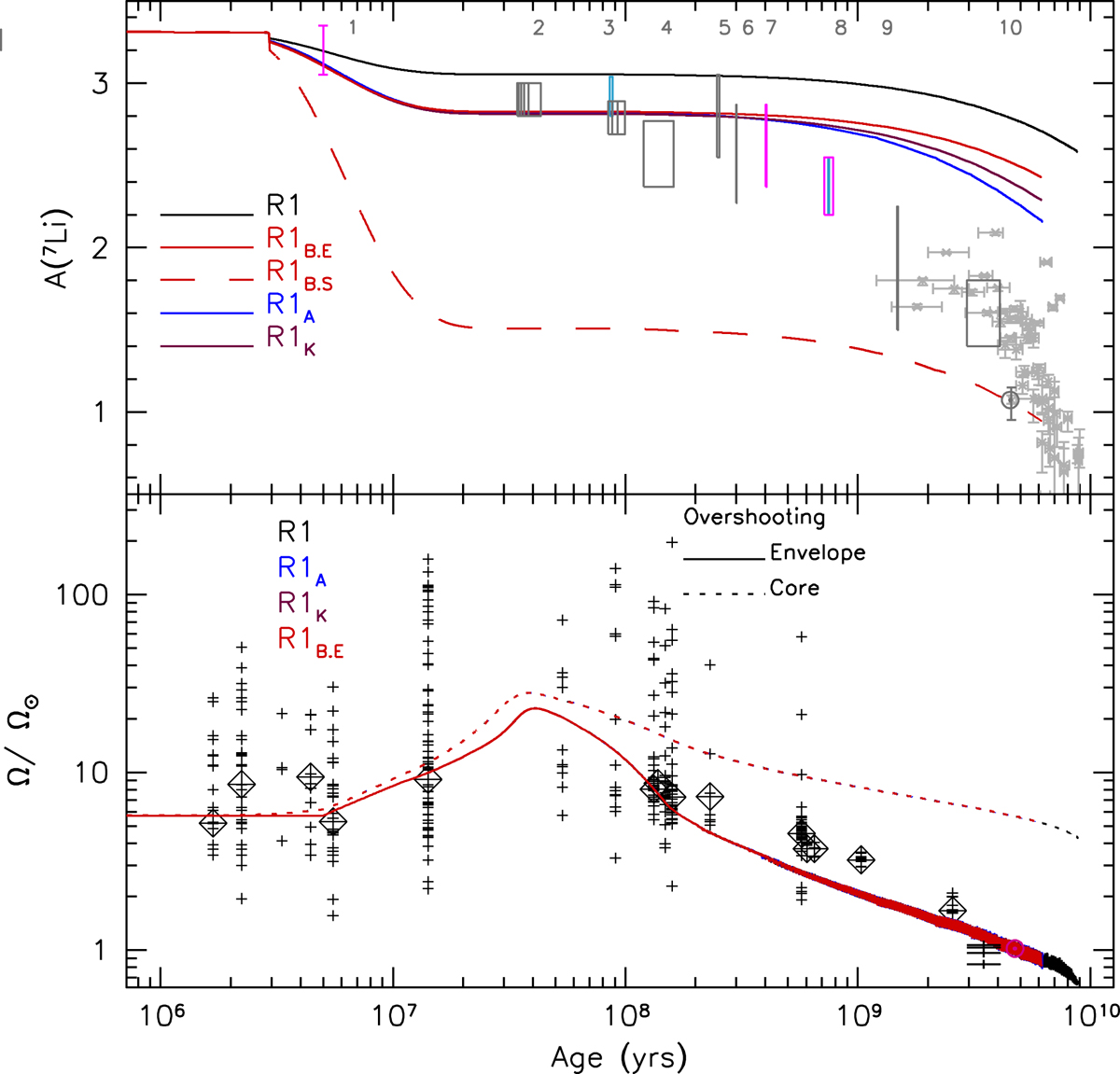Fig. 1.

Top: lithium surface abundance evolution with time for the R1 models including different overshoot prescriptions (colour-coded). Individual points are data for solar twins (Carlos et al. 2019). Boxes are for Li observations of solar-type stars in different open clusters (Sestito & Randich 2005; Carlos et al. 2020 for M 67) with ages from Bossini et al. (2019). The numbers 1–10 identify the clusters: (1) NGC 2264, (2) IC 2391, IC 2602 and IC 4665, (3) α Per, Pleiades, Blanco I, (4) NGC 2516, (5) M 34, (6) NGC 6475, (7) M 35, (8) Praesepe, NGC 6633, (9) NGC 752, and (10) M 67. The colour of the boxes indicates the [Fe/H] value: Netopil et al. (2016): pink: −0.17 to −0.05; grey: −0.05 to 0.05; light blue: 0.05–0.16. Bottom: evolution of the angular velocity of the convective envelope and of the radiative core (in solar units Ω⊙ = 2.86 × 10−6 s−1; solid and dotted lines, respectively) vs age. The observational data is from Gallet & Bouvier (2015), except the four stars of M 67 from Barnes et al. (2016). Crosses are for individual stars; open diamonds show the 50th percentiles of the observed rotational distributions in each cluster.
Current usage metrics show cumulative count of Article Views (full-text article views including HTML views, PDF and ePub downloads, according to the available data) and Abstracts Views on Vision4Press platform.
Data correspond to usage on the plateform after 2015. The current usage metrics is available 48-96 hours after online publication and is updated daily on week days.
Initial download of the metrics may take a while.


